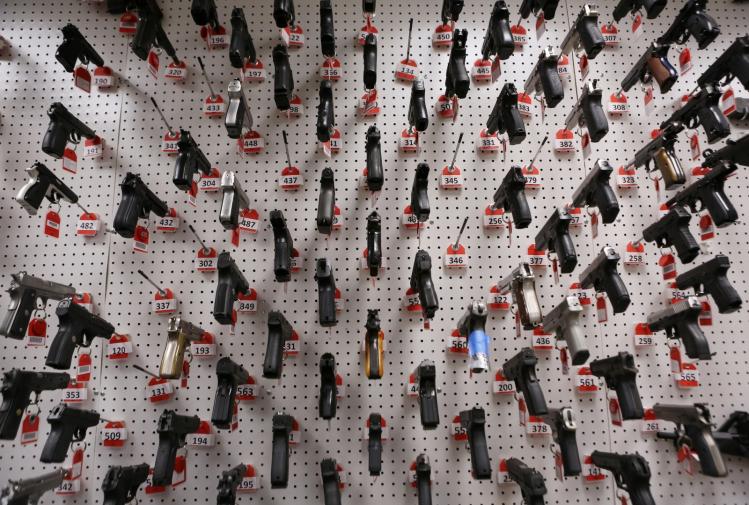
The El Paso Walmart where a gunman targeting Mexicans killed twenty-two people last summer reopened for business on the second Thursday of November. That same morning, there was a mass shooting at a high school in Santa Clarita, California; two students died, as did the sixteen-year-old gunman, who shot himself. This came a day after the U.S. Justice Department had issued recommendations—but no new regulatory proposals—for stemming gun violence. The plan, according to the Wall Street Journal, “underscores the absence of a comprehensive White House proposal” for addressing the problem. FBI statistics as of mid-November showed that the average number of people killed yearly in mass shootings has risen to sixty-seven in the decade since 2010; that’s up from twenty-four in the first decade of the 2000s, from twenty-one in the 1990s, from fifteen in the ’80s, and from eight in the ’70s. On November 16, five people were killed in a murder-suicide in San Diego; the next day, four people were shot to death at a backyard party in Fresno. According to the Gun Violence Archive, these last incidents brought the number of mass shootings in the United States to 370 so far this year. That means that 2019 will end with an average of more than one mass shooting per day.
California has some of the toughest gun laws in the country, but as elsewhere they can be easily circumvented. The assault rifle used in the mass shooting at last summer’s Gilroy Garlic Festival, for example, was purchased legally in neighboring Nevada. State and federal authorities have confirmed that the Santa Clarita shooter assembled his weapon from separate parts ordered legally through the mail. If only existing laws were sufficiently enforced, say policymakers opposed to stricter regulations, then there would be fewer mass shootings. The National Rifle Association takes the same line. The concern might ring true were it not for the ongoing campaign to water down or dismantle existing laws. There was hope among advocates of sensible gun policy that infighting and financial malfeasance at the NRA earlier this year were signs of its imminent downfall. But the organization righted itself when duty called, successfully scuttling a slate of gun measures put forth by the Justice Department following the shootings in El Paso and Dayton, Ohio, which occurred within less than twenty-four hours of each other last August.
If there was some good news to be had on guns, it came on November 12. The U.S. Supreme Court announced it would not hear an appeal by Remington Arms—the maker of the rifle used in the 2012 Sandy Hook shootings—over a lawsuit brought against the company in Connecticut state court by relatives of the victims. The decision clears the way to challenging a 2005 federal law that shields gun manufacturers, distributors, and dealers from liability in gun-related crimes. That law was the culmination of an intense seven-year lobbying effort by the NRA. Wayne LaPierre hailed it as the gun industry’s biggest legislative win in twenty years. Many others have rightly characterized it as a sweetheart deal extending protections to gunmakers that few other industries enjoy. In its prehearing filings to the Supreme Court, Remington warned that the families’ lawsuit, if successful, would “eviscerate” the 2005 federal law. Let it be so, let it be soon, and let it be just the start.
Please email comments to [email protected] and join the conversation on our Facebook page.
Share
Previous Story
Why We Give Thanks
Next Story
Adrift & Alone